1.2.1: Basic Food Preparation Equipment
- Page ID
- 64717
In order to make meals that are healthful, tasty, and appealing mastery of the tools necessary in the preparation of these meals is a key part of the process. While the equipment varies from kitchen to kitchen many of the same items can be found in both commercial and home kitchens. Please review the following kitchen items most commonly used in the home cooking environment.
Spatula
Rubber spatulas are heat resistant. This means that they will not transfer heat or get hot when using while cooking. They will melt if left over a fire. They come in different sizes. Pictured are the small and large rubber spatulas.
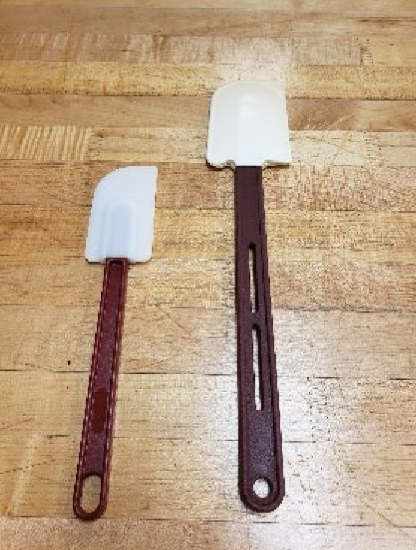
Measuring Spoons
The measuring spoons are nested in a set. The set consist of 1 Tablespoon, 1 Teaspoon. ½ Teaspoon, ⅓ Teaspoon and ¼ Teaspoon. When measuring dry ingredients: scoop the spoon into the ingredients, using a straight edge scrape the top of the of the spoon to get an even amount.
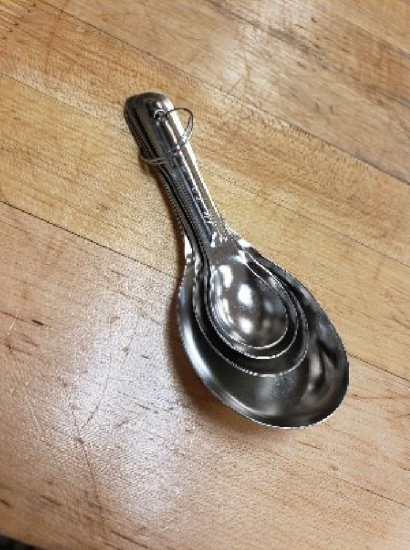
Measuring Cups
The nested measuring cups are used for measuring dry ingredients. The amounts of each measuring up will be located somewhere on the cup itself. In the example below it is printed on the inside of the cup, but on other sets it may be printed on the handle or on the underside of the cup. The measurements are 1 cup, ½ cup, ⅓ cup and ¼ cup.
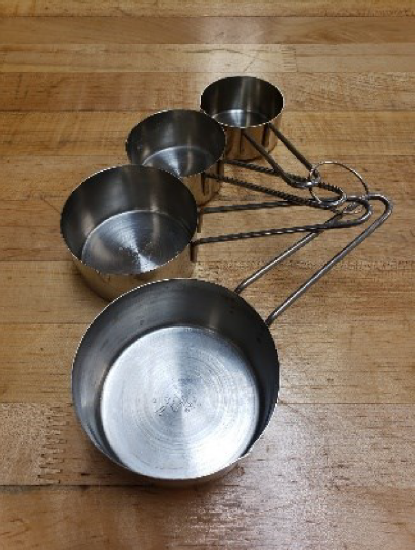
Metal Spoons
They come in slotted and un-slotted spoons. They are used in cooking dishes. They are excellent conductors of heat. If left in a pot over heat they will become very hot and will burn someone. Slotted will allow the liquid to drain through.
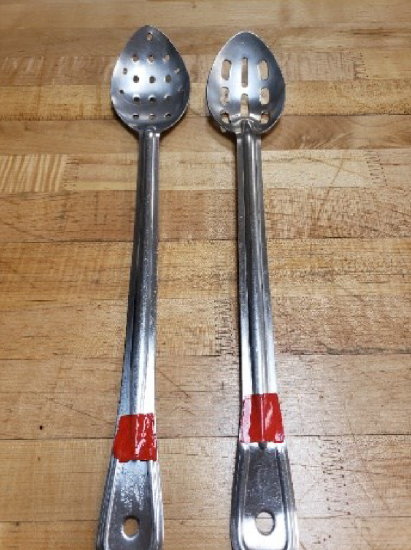
Tongs
These are used to handle hot food or ready to eat food.
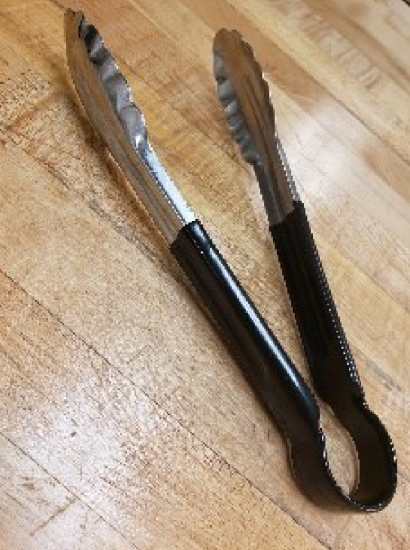
Ladles
These come in various sizes. They are measured by ounces. When tempering hot liquids these are used
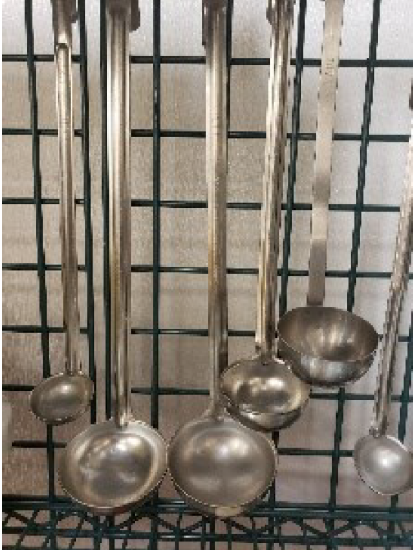
Peelers
Used to peel fruits and vegetables. The blade on this is very sharp. Most peelers have a pointed end to remove blemishes on fruit and vegetables.
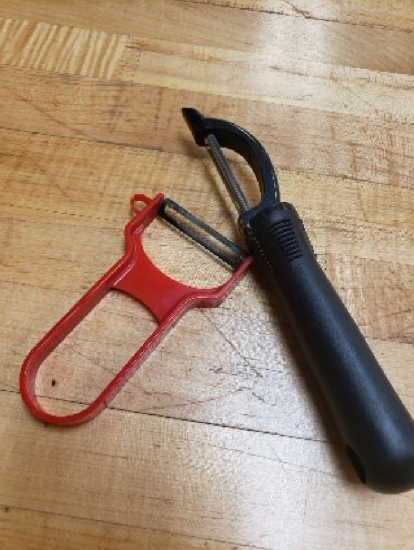
Microplane
Small hand held graters used to zest fruits and shred hard cheese and other ingredients. The zest from fruits are in tiny pieces rather than long slivers.
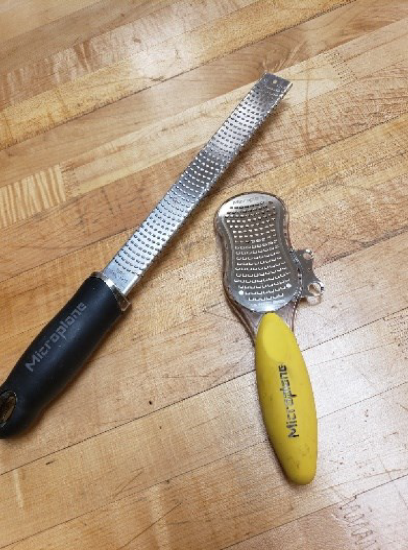
Thermometer
Thermometers are used to find the correct temperature of items. When cooking, they can find the internal temperature of meat, and bread – useful information. The thermometer pictured is an infrared thermometer. These find the surface temperature of items. They are good when tempering chocolate. Types: pocket, candy, infrared. They come in both digital and dial.
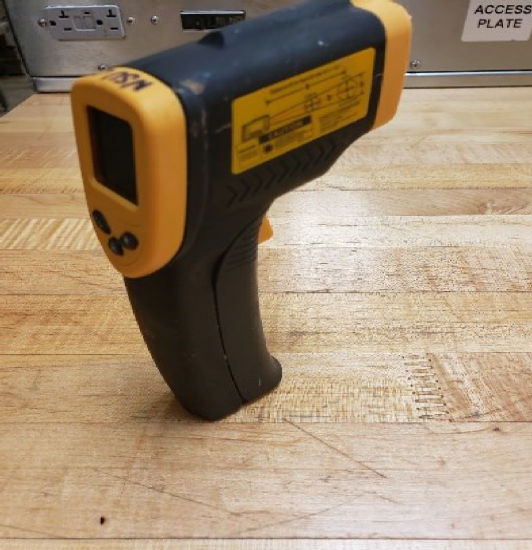
Courtesy of Tammy Rink. Chef Instructor Chef John Folse Culinary Institute
Can opener:
Hand held can openers work well with opening small cans in the home kitchen. Commercial kitchens may utilize countertop can openers helpful in opening larger cans.
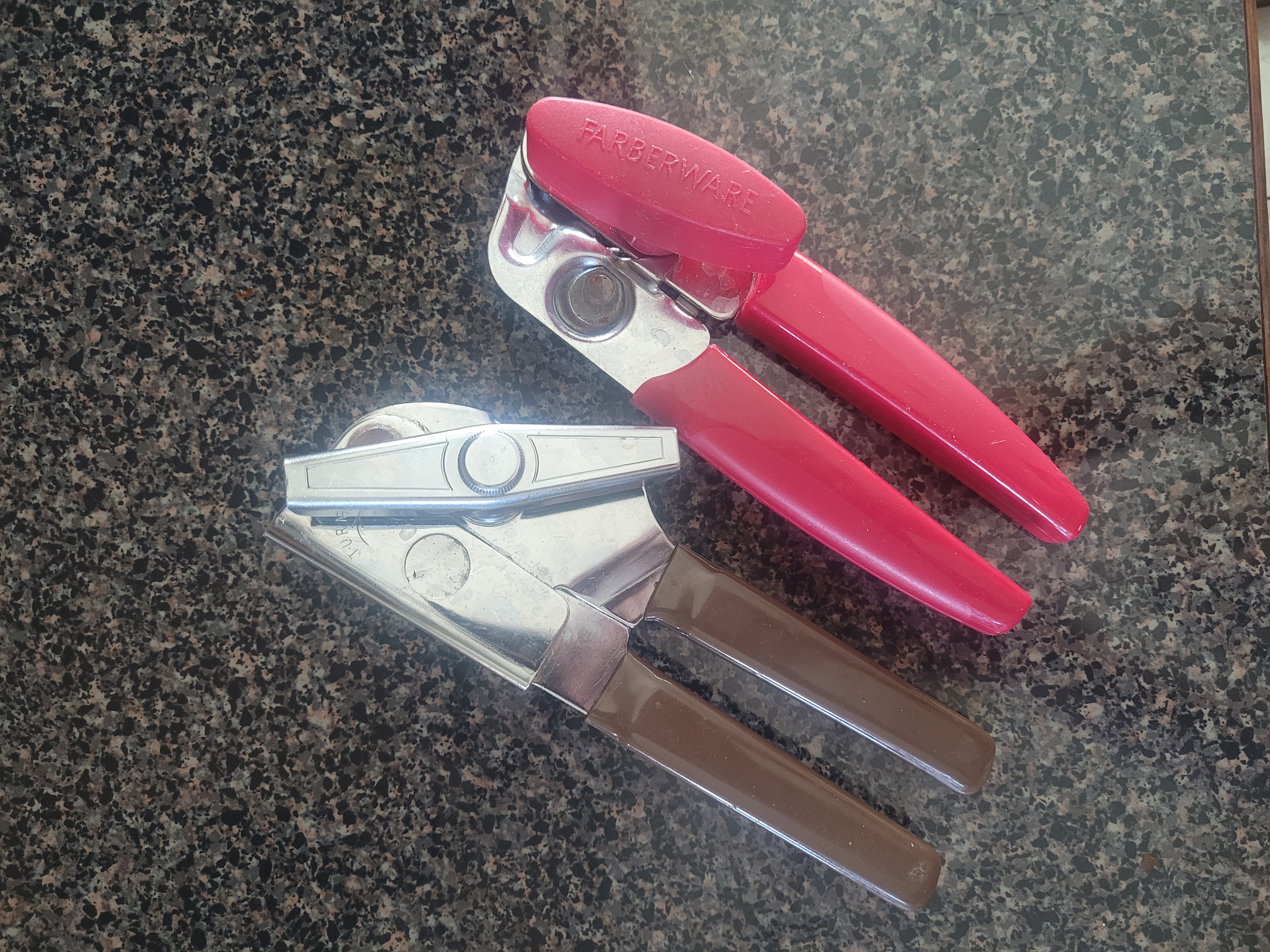
Photo: Lizz Daniels, RDN
Rice Paddle:
Rice paddles are used specifically for scooping or dishing rice. This special piece of equipment helps limit the amount of rice that is stuck to the serving utensils.
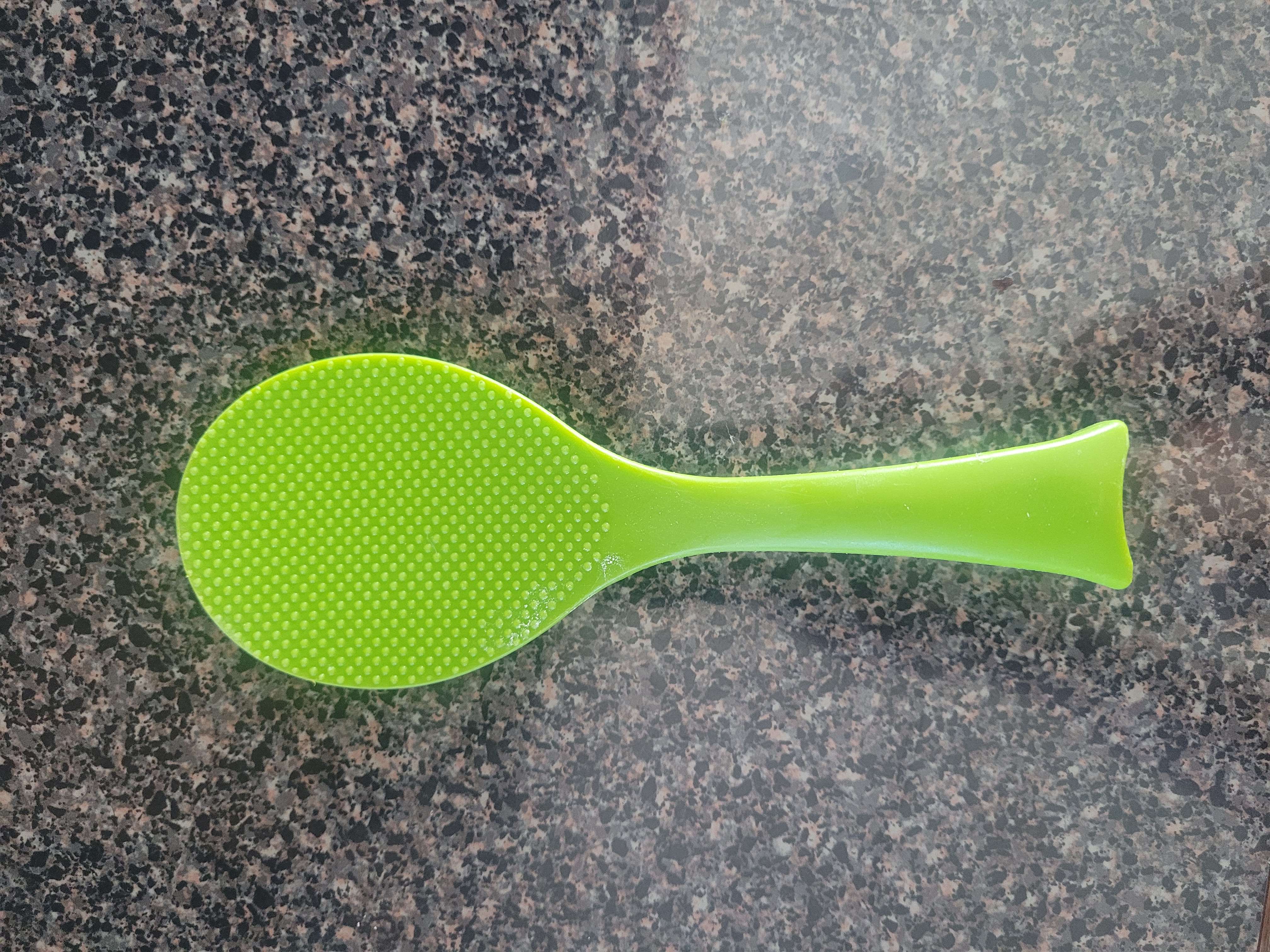
Photo: Lizz Daniels, RDN
Turner- Flipper- Spatula:
A tool that goes by many names but regardless of what you call it, it is an incredibly useful and versatile tool. Made out of different materials depending on its intended purpose this tool can flip anything from pancakes to burgers on the grill.
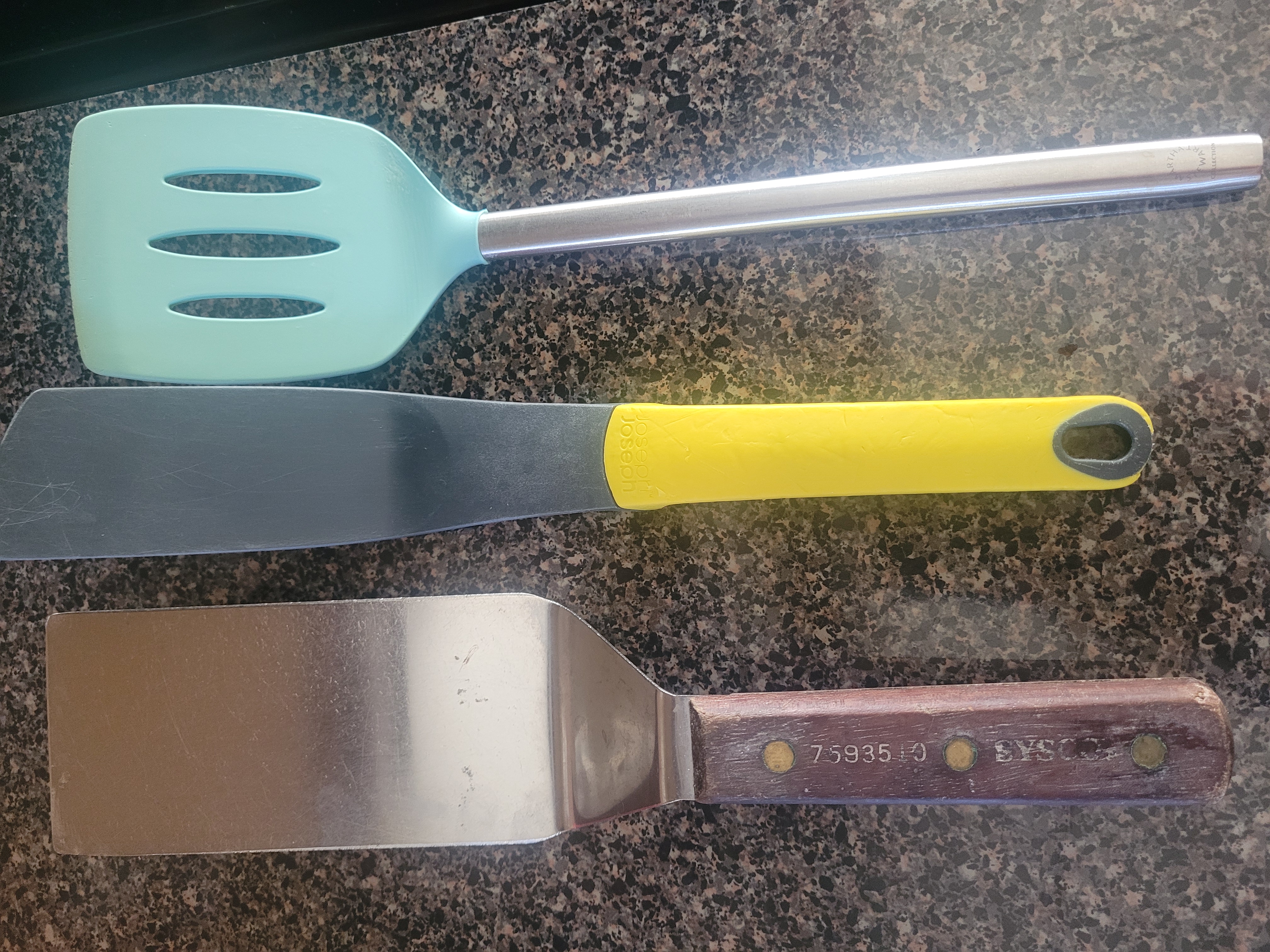
Photo: Lizz Daniels, RDN
Box Grater:
Box graters are a three or four sided device used to shred or grate foods into small pieces. Often used to grate cheese, these devices are also usefull to shredd carrots or other vegetables. To use, the user selects a side of the grater depending on the desired size cut and then runs the food over the slots on the grater in a downward motion creating the desired effect.
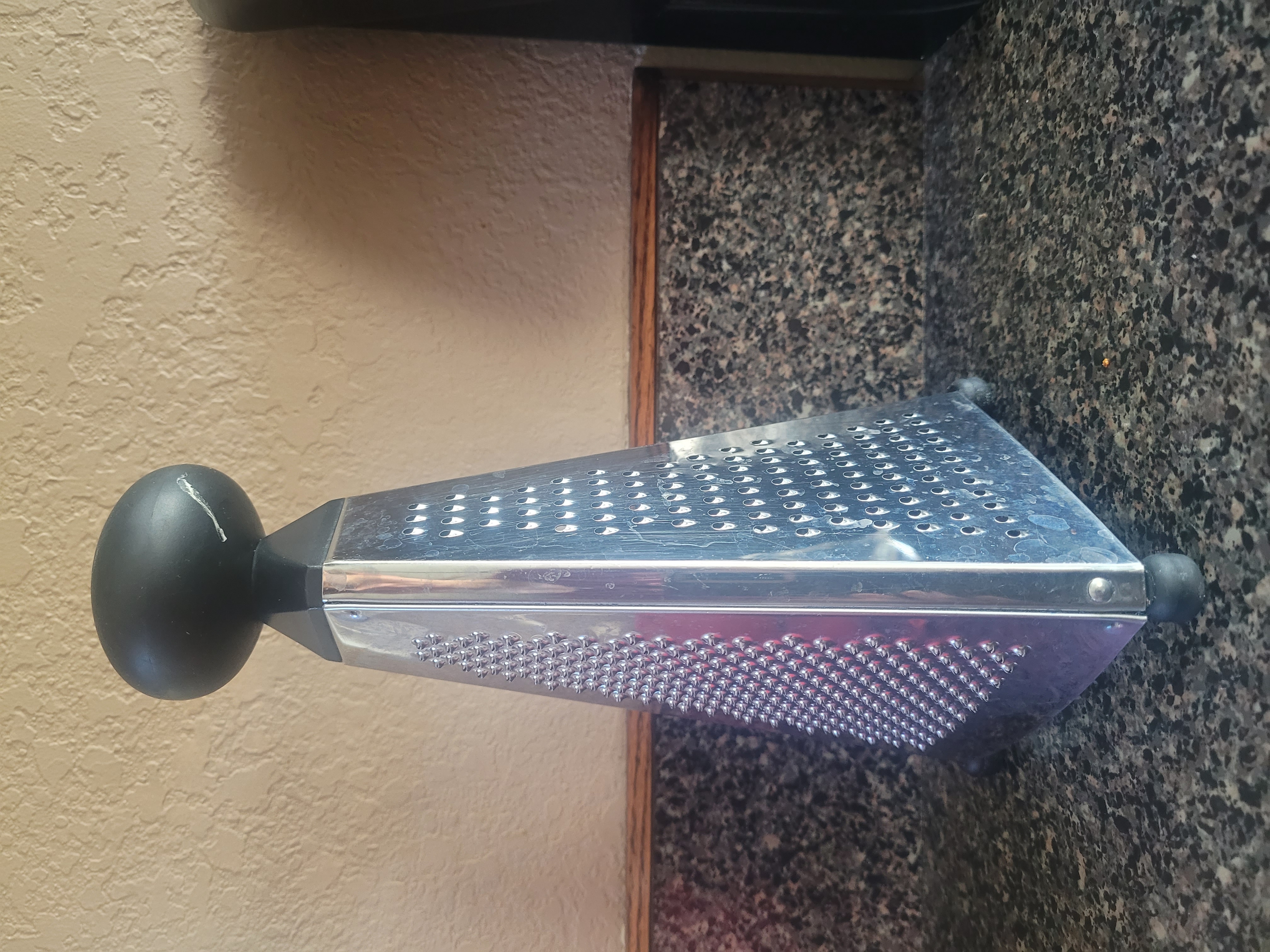
Photo: Lizz Daniels, RDN
Garlic Press:
Garlic presses can be used in place of mincing garlic cloves by hand. Peeled garlic is inserted in the device and with the handles pressed together the garlic will be squeezed through holes creating smaller pieces of garlic that can be added straight to the pan.
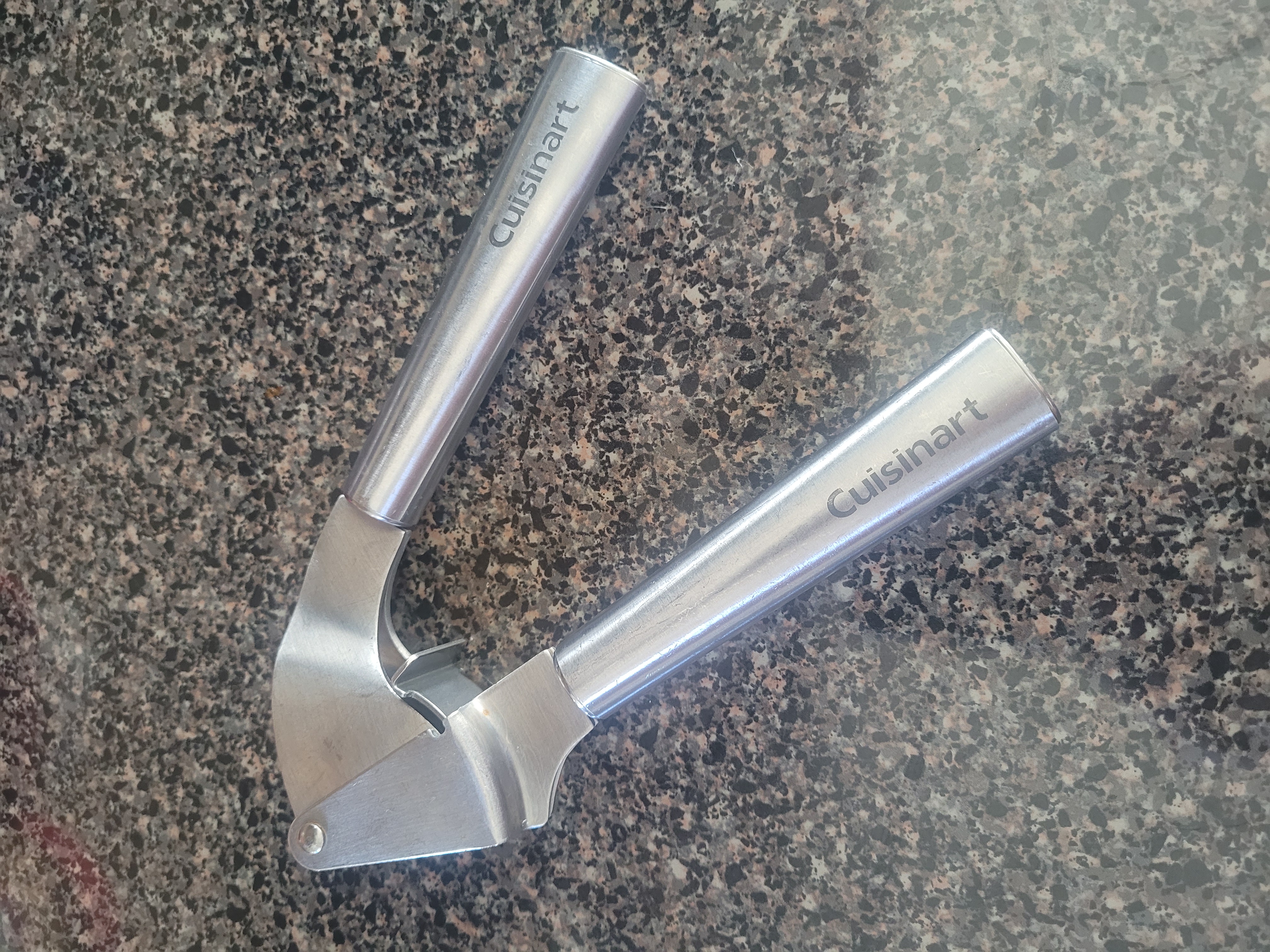
Photo: Lizz Daniels, RDN
Rolling pin:
Rolling pins are frequently made out of wood but also can be made in metal and plastic. Rolling pins are used to flatten doughs for the purpose of baking.
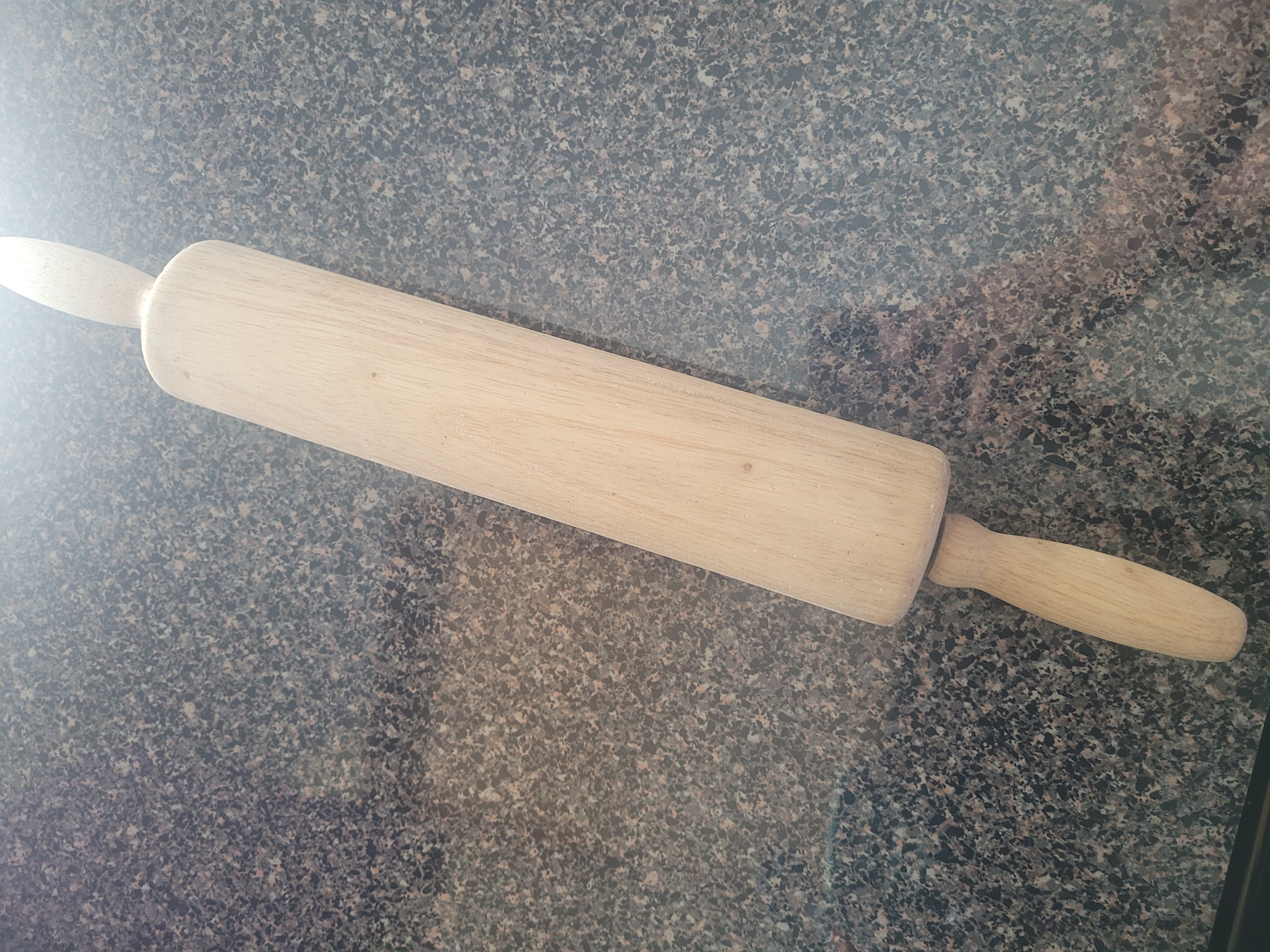
Photo: Lizz Daniels, RDN


